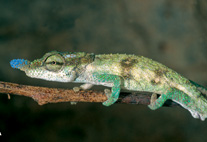Abstract
We describe a new species of limestone karst dwelling forest frog of the genus Platymantis from the Quezon Protected Landscape in southeastern Luzon Island, Philippines. We assign Platymantis quezoni, sp. nov., to the diverse assemblage of terrestrial species in the Platymantis dorsalis Group, subgenus Lupacolus on the basis of its body size and proportions, only slightly expanded terminal discs of the fingers and toes, and its terrestrial microhabitat. The new species is distinguished from these and all other Philippine congeners by features of its external morphology, its restriction to a distinctive limestone karst microhabitat, and its advertisement call, which is unique among frogs of the family Ceratobatrachidae. Several distinguishing morphological characters include its moderate body size (22.1–33.9 mm SVL for 16 adult males and 32.4–39.7 mm SVL for five adult females), slightly expanded terminal discs of the fingers and toes, smooth skin with limited dermal tuberculation, and a dorsal color pattern of mottled tan to dark brown with black blotches. The new species is the sixth Philippine Platymantis known to occur exclusively on limestone karst substrates (previously known karst-obligate species include: P. bayani, P. biak, P. insulatus, P. paengi, and P. speleaus). Recently accelerated discovery of limestone karst anurans across the Philippines suggests that numerous additional species may await discovery on the hundreds of scattered karst formations throughout the archipelago. This possibility suggests that a major conservation priority in coming years will be to study, characterize, describe, and preserve the endemic species supported by this patchy, unique and imperiled type of forest ecosystem in the Philippines.

